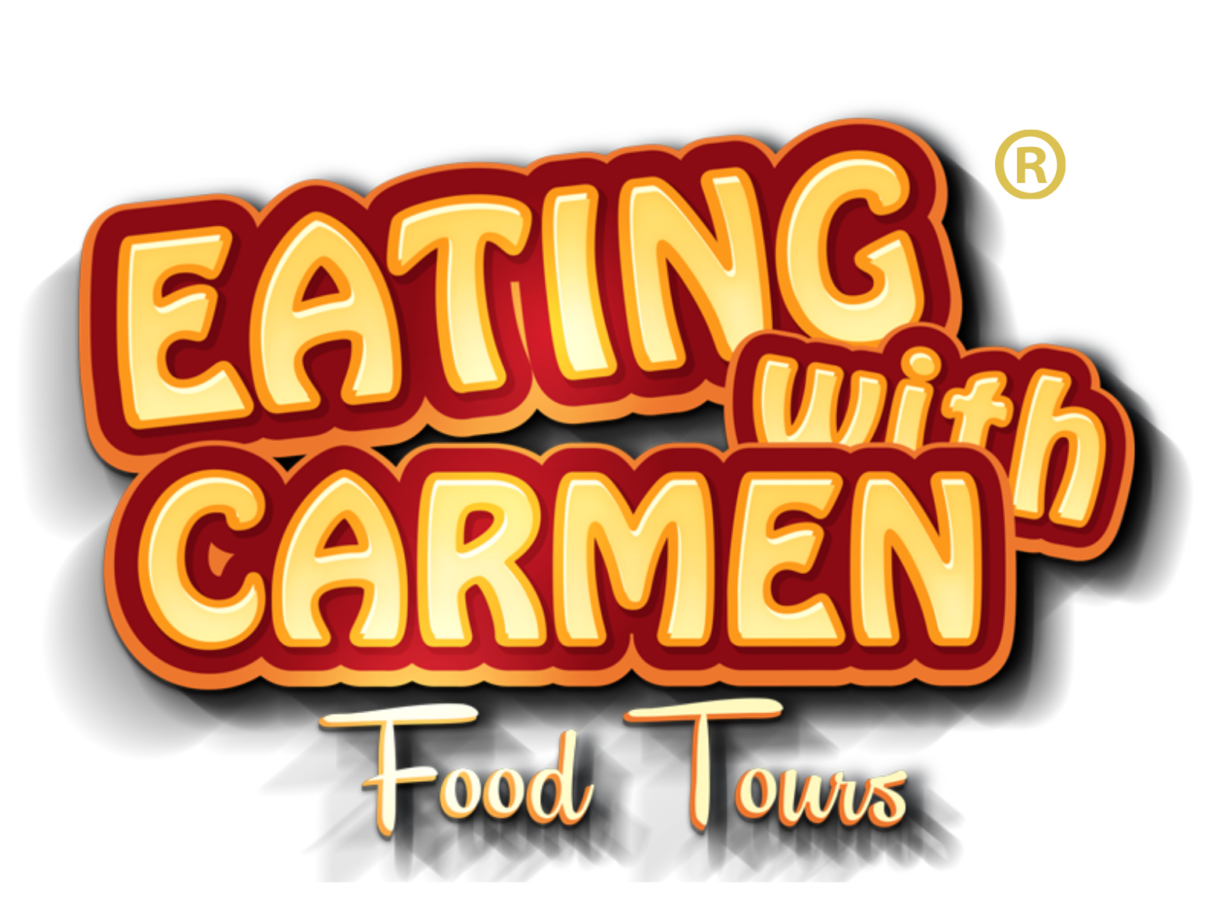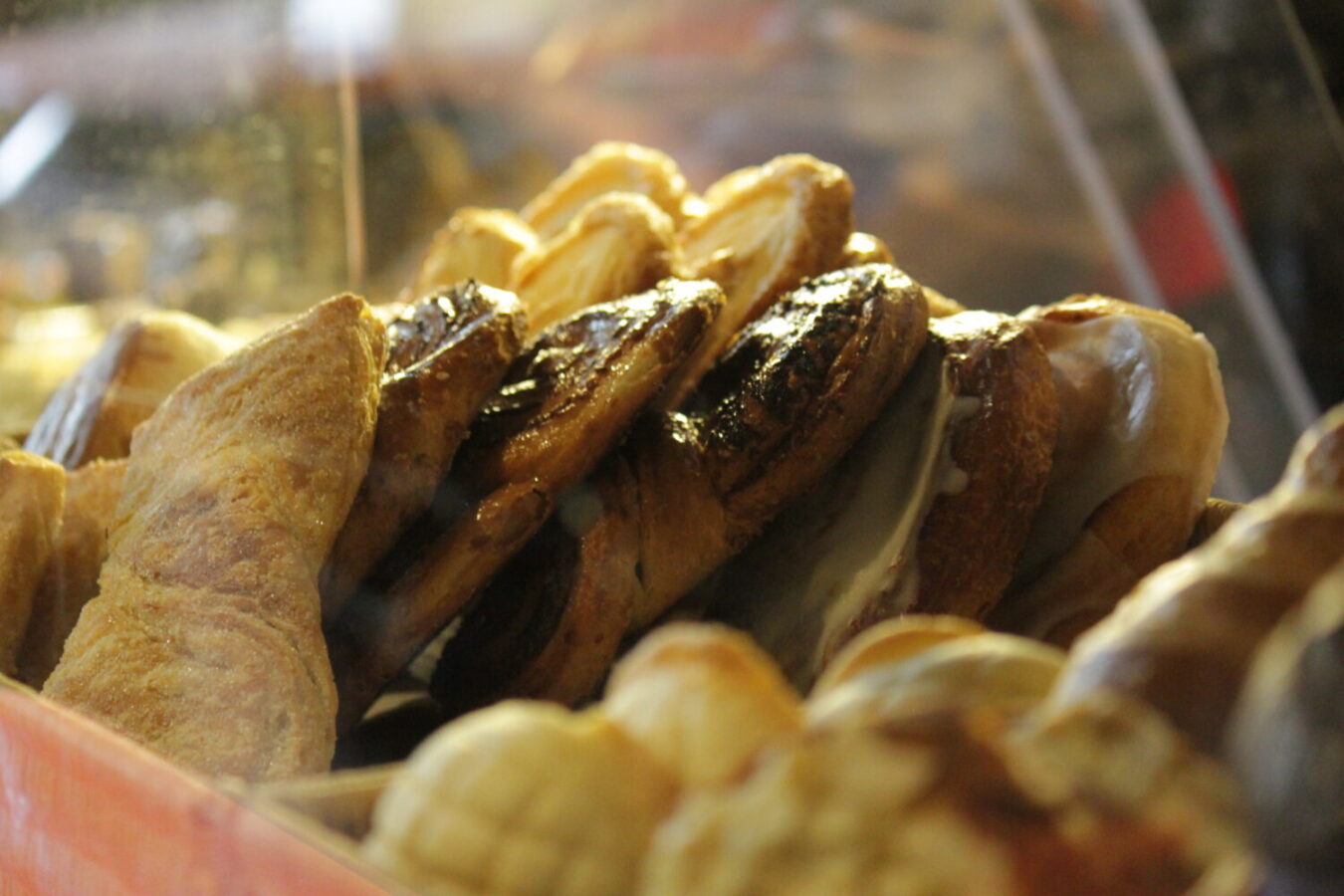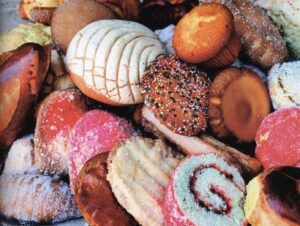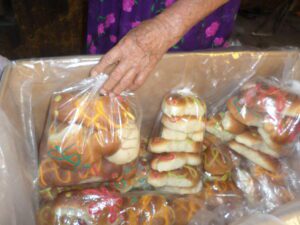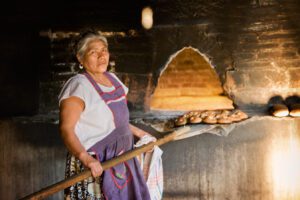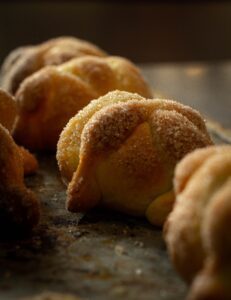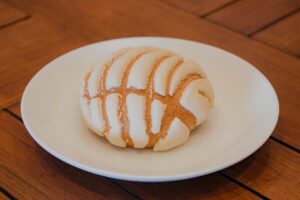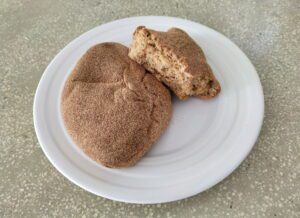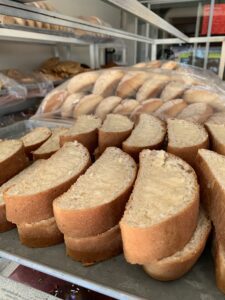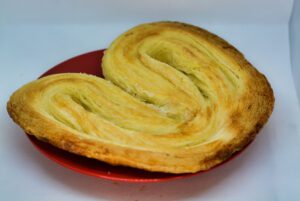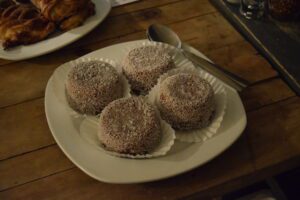Mexican traditions are usually complemented with colorful, hand-made regional garments, music that transports you to the most beautiful childhood memories, and delicious traditional dishes with a wide variety of regional ingredients. In most traditional Mexican recipes, everything is about perfectly balancing the ingredients, as we can taste in Mole, a traditional dish that not only has chiles, spices, and peanuts but also chocolate and banana, achieving a sauce with an unmatched flavor, we also have “aguas frescas” soft drinks made with the most delicious fruits and vegetables that, besides refreshing us during the day, also provide all the necessary natural properties of a good diet.
Although most of our most popular dishes tend to be salty or spicy, we must confess that Mexicans have a weakness for sweets in all variations and something that definitely cannot be missing from the Mexican diet is undoubtedly Pan Dulce, traditional sweet pastries, an all-time favorite dessert for all ages, which can be eaten for breakfast, dinner and at coffee time. They come in all shapes, colors, and flavors, with chunks of fruit or raisins, filled with pastry cream or chocolate, and decorated with colored sprinkles or sugar, Mexican baker’s creativity has no limits.
Source: Wikipedia Commons.
FROM GODS OFFERINGS TO OUR TABLE
Since ancient Mexican civilizations times, bread already played an important role both in food and in ceremonial events. During the ceremonies carried out in the first days of May, when crops were harvested, people lit copal and placed food to the gods such as the traditional cooked corn pancakes called “cocollí” and uncooked corn empanadas called “uilocpalli”. For other religious celebrations, Mexica women ground amaranth seeds, mixed them with honey or molasses and the blood of sacrificed victims to form a paste called “tzoalli”, with which statues of gods were formed to sacred “their flesh.” and consumed it with great reverence. Amaranth became very important in Mesoamerican crops, so much so that within agricultural activities it was considered on the same level as corn and beans.
The Mayans were perhaps the first to use amaranth mainly for its nutritional value, while the Mexicas linked it more to religious rites. The Mexica production of amaranth was divided for personal consumption, and as tribute to their kings and was used for carrying out transactions. They considered it sacred because it resisted drought, and also provided vigor as food, so it was consumed by warriors to increase their strength. Unfortunately, amaranth production began to decline after the Conquest, due to the ritual use of this plant, the Spaniards considered it a perversion of the catholic eucharist, so they banned its consumption.
According to the National Chamber of the Baking Industry (CANAINPA), the beginning of the baking industry as we know it today dates back to 1524, when Europeans brought the process of transforming wheat into bread. The bread was sold on a massive scale in grocery stores, plazas, and markets, and by the end of the 18th century, the first European bakery and pastry masters arrived in Mexico, mainly from France and Italy, establishing the first family bakeries or bread workshops. Salty bread was baked, such as a crunchy bread called bolillo and pambazos. On the other hand, the sweet ones were made of a French-Style puff pastry, such as campechanas. For its distribution, the delivery bakers went out into the streets with the bread arranged in a large basket that they carried on their heads, while they shouted and offered the freshly baked bread
Over the years and thanks to industrialization, bread has also been able to be marketed on a larger scale, but it will never replace the good taste of good artisanal bread. Finally, in the 1950s, a great contribution was made to the bakery business, allowing the customer to select and place their bread on a tray, initiating self-service in bakeries.
PAN DULCE WITH A PINCH OF TRADITION
Mexican bakery is a clear example of the fusion of cultures from two worlds, the mixing of ingredients and techniques that are an essential part of the daily life of Mexican families. Among the variety of traditional Pan Dulce, there are pastries for daily consumption and some others for seasonal festivities.
SEASONAL PAN DULCE
Pan de Pulque
One of the most popular pastries that cannot be missing in festivities and local town fairs throughout the country. It is made with a mixture of wheat flour, vegetable shortening, sugar, eggs, and yeast, but in the old days, the traditional pulque was used as a substitute for yeast, which as we know was considered a sacred drink of the Mexicas.
Source: Wikipedia Commons.
Rosca de Reyes
It came from pagan customs and was later modified by Catholics, baked with sweet dough and decorated with candied fruit such as figs, oranges, and cherries. Inside hidden plastic or ceramic dolls represent baby Jesus. Nowadays, on January the 6th, the Rosca de Reyes, representing the crowns of the 3 wise men, delights all Mexican homes, accompanied by a cup of hot chocolate.
Source: Wikipedia Commons.
Pan de Muerto
Nowadays, an indispensable element in the Day of the Dead Altar, but once used as a means of evangelization, replacing human offerings with pieces of bread that were originally covered in red sugar resembling the color of blood. This fusion between cultures gave birth to a round sweet bread covered by sugar that represents the circle of life, decorated with four “bones” that symbolize the 4 cardinal points or 4 limbs of men, in the center it is crowned by a ball of bread that represents a skull or the center of the universe. Another of the most important characteristics is its flower scent which represents the entrance to the underworld since it is common for death to be associated with the smell of flowers.
Photo by Luis Covarrubias
YOUR EVERYDAY PAN DULCE
My daily routine usually begins with a cup of coffee and a piece of Pan Dulce, otherwise, something doesn’t feel right, probably a family thing, you see, my 99-year-old Granny usually eats up to 3 pieces of Pan Dulce a day, claiming that’s what keeps her full of life. And just like my own, families throughout Mexico get together at the end of a busy day to catch up while sipping some hot chocolate or Mexican coffee and some of the all-time favorite Pan Dulce:
La Concha
Resembling the shell of a Turtle, the popular Concha is a spongy, light, perfect, and delicious brioche-type bread with a layer of sugarcane with vanilla or chocolate flavor, this mix of textures becomes a unique experience on your palate. To make the perfect Concha, the base ingredients need to be of the highest quality and course the right amount of baker’s magic.
Photo by GERARDO MR
The Cocol
Its name comes from the Nahuatl “cocolli” which means anger. The base of this bread is a diamond-shaped sponge cake, with an anise and piloncillo flavor and a very soft texture.
Source: Wikipedia Commons.
Rebanada de Mantequilla
A simple slice of bread with homemade butter and sprinkled sugar, yet an exquisite and perfect combination for a delicious cup of coffee or even a cup of tea.
Source: Wikipedia Commons.
Oreja
This popular pastry was first baked in the favorite bakery of the seven-time President of Mexico, Porfirio Díaz, shaped like an ear, and made with a crispy puff pastry, and yes you’re as you may have suspected… sprinkled with sugar.
Source: Wikipedia Commons.
And those are just to mention a few because each bakery has its specialty, without leaving aside other classics such as the famous cupcake covered with apricot jam and sprinkles called Garibaldi, Mexican-style croissants sometimes covered in sugar, chocolate-covered donuts with sprinkles, cinnamon, and piloncillo puerquitos, and let me tell you something, I could go on and on but the truth is that I highly suggest that on your next visit to the Riviera Maya or any Mexican town, look for “the panadero” (baker), riding his bike and carrying his large tray of bread while yelling at the top of his lungs “EL PAAAAAAAAAN!!” You can ask him which one is his favorite if you don’t know where to start choosing from.
Source: Wikipedia Commons.
The origins and flavors of Mexican pastries are a clear example of how Mexican gastronomy takes culinary elements from other cultures and reinvents them to make them even better, giving them that characteristic pinch of visual appearance and flavors that are not only delicious but also tell the history of a whole country.
From one foodie to another,
-Abbey Sprinkles.
